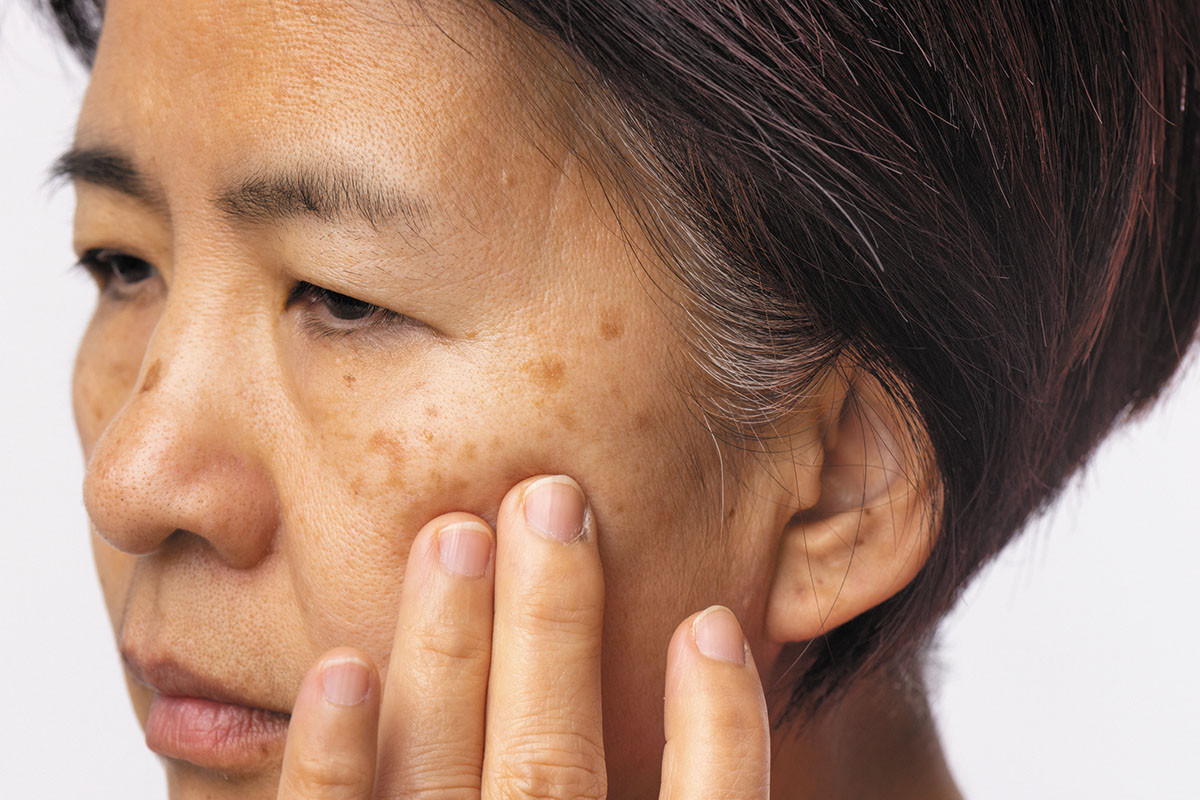
Can white noise really help you sleep better?

Celiac disease: Exploring four myths

What is prostatitis and how is it treated?

What is Cushing syndrome?

Exercises to relieve joint pain

Think your child has ADHD? What your pediatrician can do

Foam roller: Could you benefit from this massage tool?

Stepping up activity if winter slowed you down

Common causes of cloudy urine

Dragon fruit: How to enjoy this antioxidant-rich fruit
Skin and Hair Archive
Articles
The best sun-protective clothing
Sun-protective clothes are made of materials that shield your skin from harmful ultraviolet (UV) rays. The most effective fabrics for the job have high thread counts, are tightly woven, and are dark or bright colors (which absorb light). Examples include polyester, nylon, lightweight wool, or canvas. Many clothing manufacturers now use high-tech fabrics for sun-protective garments. Some wick away moisture and dry quickly. Some are embedded with chemicals used in sunscreens (such as zinc oxide and titanium dioxide). High-tech fabrics offer at least as much protection as regular densely woven fabrics, and maybe more.
How to get rid of warts
Warts are an unsightly nuisance that can take a year or more to go away on their own. Several effective, noninvasive treatments are available.
Swimming and skin: What to know if a child has eczema
Swimming is a great activity for children, but for children with the allergic skin condition known as eczema, swimming can be complicated. Taking steps to protect skin before and after a swim can help.
Winning the skin game
As people age, earlier sun damage to the skin, especially on the face and neck, shows up as dry skin, wrinkles, and age spots. While much of this sun damage occurred in the past, people can take steps later to reverse some of it. Adopting a three-step daily skin care routine—washing, moisturizing, and applying sunscreen—is the best way to treat existing skin problems, maintain healthy skin, and protect against future harm.
Is biting my nails really that bad?
Nail-biting can introduce germs into people's mouths that can cause a range of illnesses, including colds or salmonella. The habit also creates tiny fissures in skin that can become infected. People who bite their nails should occupy their mouth and hands with other tasks.
Considering collagen drinks and supplements?
Celebrities and influencers claim that consuming collagen could have miraculous benefits for skin, hair, and nails. But what does the science say?
Fighting the most common skin cancers
The most common non-melanoma skin cancers are basal cell carcinomas and squamous cell carcinomas. They aren’t usually life-threatening, but they can be quite dangerous. They can bleed, hurt, and eat away at skin. If left untreated, they can erode through important structures like the nose, eyes, bones, or muscles. If they become very large, they can spread, and in rare cases cause death. Treatment ranges from scraping out skin cancers with surgical tools to Mohs surgery, a procedure that spares as much healthy skin as possible.
Why won't my hives go away?
Hives are red, itchy welts that crop up on the skin. Allergic reactions and stress, among other triggers, can cause episodes of hives, which typically last several days to a couple of weeks. Cases that last six weeks or longer may be autoimmune hives.
A mask that's hard to shed
Melasma, which causes dark patches on the face, is far more prevalent in women than in men. Dubbed the "mask of pregnancy," melasma triggers include not only pregnancy but also hormonal fluctuations, genetics, and sun exposure. People with darker skin are more prone to it. Melasma is typically treated with topical products that lighten the skin or slough off cells. Laser treatments and chemical peels, however, may worsen melasma. Sunscreen use can help prevent flares.
It's not too late to save thinning hair
Treatment for hair loss depends on the type of hair loss a person is experiencing. Sudden hair loss often gets better on its own once an underlying condition is treated. Gradual hair thinning caused by aging or genetics may stop or start to reverse with topical medications, oral medications, supplements, laser light treatments, or injections of platelet-rich plasma. And for any of these approaches, the key is starting them as soon as hair loss is detected. Once hair follicles stop working, the only option to restore hair is hair transplant surgery.

Can white noise really help you sleep better?

Celiac disease: Exploring four myths

What is prostatitis and how is it treated?

What is Cushing syndrome?

Exercises to relieve joint pain

Think your child has ADHD? What your pediatrician can do

Foam roller: Could you benefit from this massage tool?

Stepping up activity if winter slowed you down

Common causes of cloudy urine

Dragon fruit: How to enjoy this antioxidant-rich fruit
Free Healthbeat Signup
Get the latest in health news delivered to your inbox!
Sign Up











